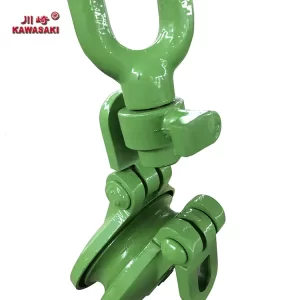Understanding the Basics of Pulley Blocks
What is a Pulley Block?
A pulley block is an essential mechanical tool used to redirect force and manage lifting operations efficiently. Typically consisting of one or more wheels, each fitted with a groove for the rope or cable, pulley blocks facilitate the lifting and lowering of heavy loads. In winching operations, they play a crucial role by providing a means to achieve greater lifting capability and flexibility in movement, allowing the operator to control the load more effectively.
Types of Pulley Blocks
There are several types of pulley blocks, each designed for specific applications. Single blocks are primarily used for straightforward lifting tasks, while double or multiple blocks are utilized to create a mechanical advantage, increasing the load capacity significantly. Furthermore, specialized blocks, such as sheave blocks and snatch blocks, provide versatile options for various winching configurations, enhancing adaptability to different environments and tasks.
Importance of Pulley Blocks in Winching Operations
Pulley blocks can dramatically affect winching performance, as they reduce the amount of force required to lift or move a load. By adjusting the configuration of the blocks, winch operators can tailor their setup to optimize power output and efficiency. Additionally, using pulse blocks minimizes wear and tear on the winch itself, thereby extending its operational lifespan. Understanding their importance can lead to improved safety and effectiveness in challenging winching scenarios.
The Science Behind Pulley Block and Winch Synergy
Mechanical Advantage Explained
The concept of mechanical advantage arises when using a pulley block in conjunction with a winch, making it possible to lift heavier loads with less force. This advantage stems from distributing the weight of the load across multiple lines and pulleys. As a result, operators can develop powerful lifting capabilities in situations that would otherwise be unmanageable.
Reducing Line Tension with Pulley Blocks
Utilizing a pulley block effectively reduces line tension, allowing for smoother operation and decreased risk of equipment failure. By spreading the load across multiple attachment points, the force exerted on the winch’s rope or cable is significantly lowered. This reduction in tension not only enhances winching safety but also mitigates potential damage to the pulling mechanism and minimizes abrasion on the lines.
Impact on Winching Speed and Efficiency
The configuration of pulley blocks directly influences the speed and efficiency of winching operations. Strategic arrangements enable the winch to work at a higher capacity with less energy consumption. This can lead to reduced operational time and increased productivity, as operators can complete the task at hand faster and with less effort. Overall, incorporating the right pulley block configuration is a vital element in optimizing winch systems.

Selecting the Right Pulley Block for Your Winch
Material Considerations (Steel, Aluminum, etc.)
When selecting a pulley block for winching applications, material considerations are paramount. Steel pulley blocks offer durability and strength suited for heavy-duty operations, while aluminum blocks provide lightweight options for less strenuous uses. Assessing the material’s properties in relation to the expected load and environmental conditions ensures functionality and longevity in diverse operational contexts.
Size and Load Capacity Matching
Choosing the appropriate size and load capacity of a pulley block is essential for ensuring reliable performance. An accurate match between pulley block specifications and the winch’s capabilities maximizes safety and minimizes the risk of failure during operation. Assessing the weight of the loads being lifted and the type of winch used facilitates informed decisions regarding which pulley block configuration will yield optimum results.
Compatibility with Different Types of Ropes and Cables
Effective winching is contingent on the selection of compatible ropes and cables for the chosen pulley block. Various materials and sizes exist, each designed for specific applications and load requirements. Ensuring that the selected pulley block is compatible with the type of rope or cable being utilized is critical to maintaining system integrity and achieving desired operational outcomes.
Incorporating Apollo Products To enhance winch performance through optimal pulley block configurations, utilizing products from Apollo Hoists is an excellent choice. Their range of high-quality pulley blocks is designed with advanced engineering principles, ensuring impressive strength and durability. Apollo offers versatile options tailored for a vast array of applications, ensuring that users can select the ideal solution to meet specific project requirements. With a focus on innovation and customer satisfaction, Apollo is committed to providing the best equipment for all winching needs.
By understanding the importance of pulley block configurations, users can significantly enhance the performance and efficiency of their winching operations. The synergy between the blocks and the winch design is crucial, allowing operators to implement the necessary adjustments that optimize their load management capabilities. As a professional in the field, leveraging knowledge of pulley blocks and selecting suitable equipment will drive success in your winching projects.

Apollo’s High-Performance Pulley Block Solutions
Introduction to Apollo’s Product Range
Apollo Hoists specializes in delivering advanced pulley block systems that stand out for their performance, durability, and innovative designs. Each of their products is crafted with the utmost precision to cater to a variety of applications, including industrial, construction, and recreational uses. By prioritizing quality and efficiency, Apollo ensures that each pulley block not only meets but exceeds industry standards. Their wide selection allows users to find the right fit for their winching needs, enhancing operational performance while maintaining safety.
Unique Features of Apollo’s Pulley Blocks
Durable Materials and Designs
Apollo’s pulley blocks are constructed from premium materials that promote longevity and resilience. The robust steel and lightweight aluminum options provide ideal choices depending on the specific requirements of the application. Their designs incorporate advanced engineering techniques that increase load-bearing capacity while minimizing wear and tear. This durability results in reduced operational costs, decreased downtime, and overall greater efficiency during winching operations.
Innovative Locking Mechanisms
One of the distinctive features of Apollo’s pulley blocks is their innovative locking mechanisms. These systems ensure that the load remains secure during lifting or lowering, providing an added layer of safety for the operator and the equipment involved. Such mechanisms are crucial in preventing accidental disengagement or slippage, which can lead to dangerous situations. The enhanced locking designs also facilitate swift adjustments, making it easier for operators to configure the system as required.
Easy Maintenance and Longevity
Maintenance is a critical component of equipment performance, and Apollo’s products are designed to simplify this process. With easily accessible components and user-friendly maintenance protocols, operators can ensure their pulley blocks maintain optimal functionality over time. The high-quality materials reduce the frequency of repairs, while the thoughtful design combines efficiency with sustainability, leading to extended service life for all Apollo pulley blocks.
How Apollo Enhances Winch Performance with Their Technology
Apollo’s cutting-edge pulley block technology works in harmony with winches to significantly enhance lifting performance. The proper configuration of Apollo pulley blocks allows for an increased mechanical advantage, meaning that heavier loads can be managed more easily and effectively. By distributing weight effectively across multiple lines, these blocks reduce the strain on the winch itself, ensuring prolonged operation without the risk of equipment failure. This synergy between the pulley blocks and winches results in optimized performance, enhancing both speed and efficiency in various lifting contexts.
Step-by-Step Guide to Installing a Pulley Block on a Winch
Safety Precautions Before Installation
Prior to installing a pulley block on a winch, it is essential to conduct a thorough risk assessment and familiarize oneself with the safety protocols specific to the equipment being used. Operators should ensure they have the appropriate personal protective equipment (PPE) in place, such as gloves, helmets, and safety glasses. It is vital to verify that the winch is powered down and disconnected to prevent accidental activation during installation. Additionally, surrounding areas should be cleared to avoid hazards that could impede safe operations.
Tools Required for Installation
When preparing for the installation of a pulley block on a winch, having the right tools is crucial. Standard tools typically required include a socket set, wrenches, and screwdrivers for assembling and securing the pulley block. A torque wrench may also be necessary to ensure that all components are tightened to the manufacturer’s specified torque limits. For additional convenience, a ladder or platform may be needed to access elevated areas comfortably.
Detailed Installation Procedure
The installation process begins by reading through the manufacturer’s instructions carefully to understand the specific requirements for the chosen pulley block. First, prepare the winch by ensuring it is securely mounted and stable. Next, using the appropriate tools, attach the pulley block to the designated mounting points on the winch, making sure to align components accurately. Once the block is secured, thread the appropriate rope or cable through the block and connect it to the load attachment point. Finally, inspect the entire setup for proper alignment and ensure that all connections are secure, and then conduct a functionality test to verify the system operates smoothly before any lifting is performed.
Conclusion: Achieving Peak Efficiency with Proper Configurations
To achieve peak efficiency in winching operations, the thoughtful selection and implementation of pulley block configurations are paramount. By understanding the critical role that Apollo’s high-performance pulley blocks play, users can significantly enhance their operational capabilities. The interplay of advanced materials, innovative designs, and systematic installation procedures culminates in an effective lifting solution. By incorporating Apollo’s products, professionals can ensure the resilience and reliability of their winch systems, ultimately leading to safer and more productive outcomes in their respective fields.

